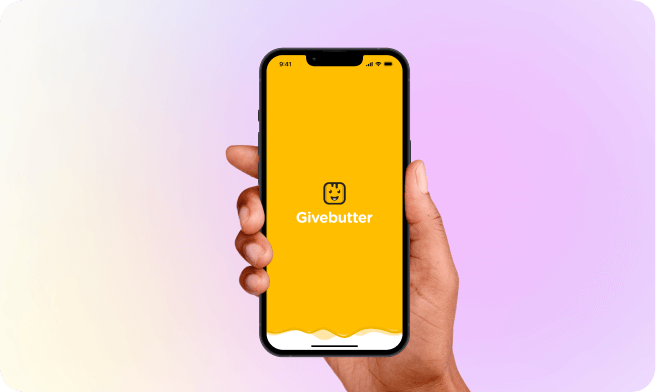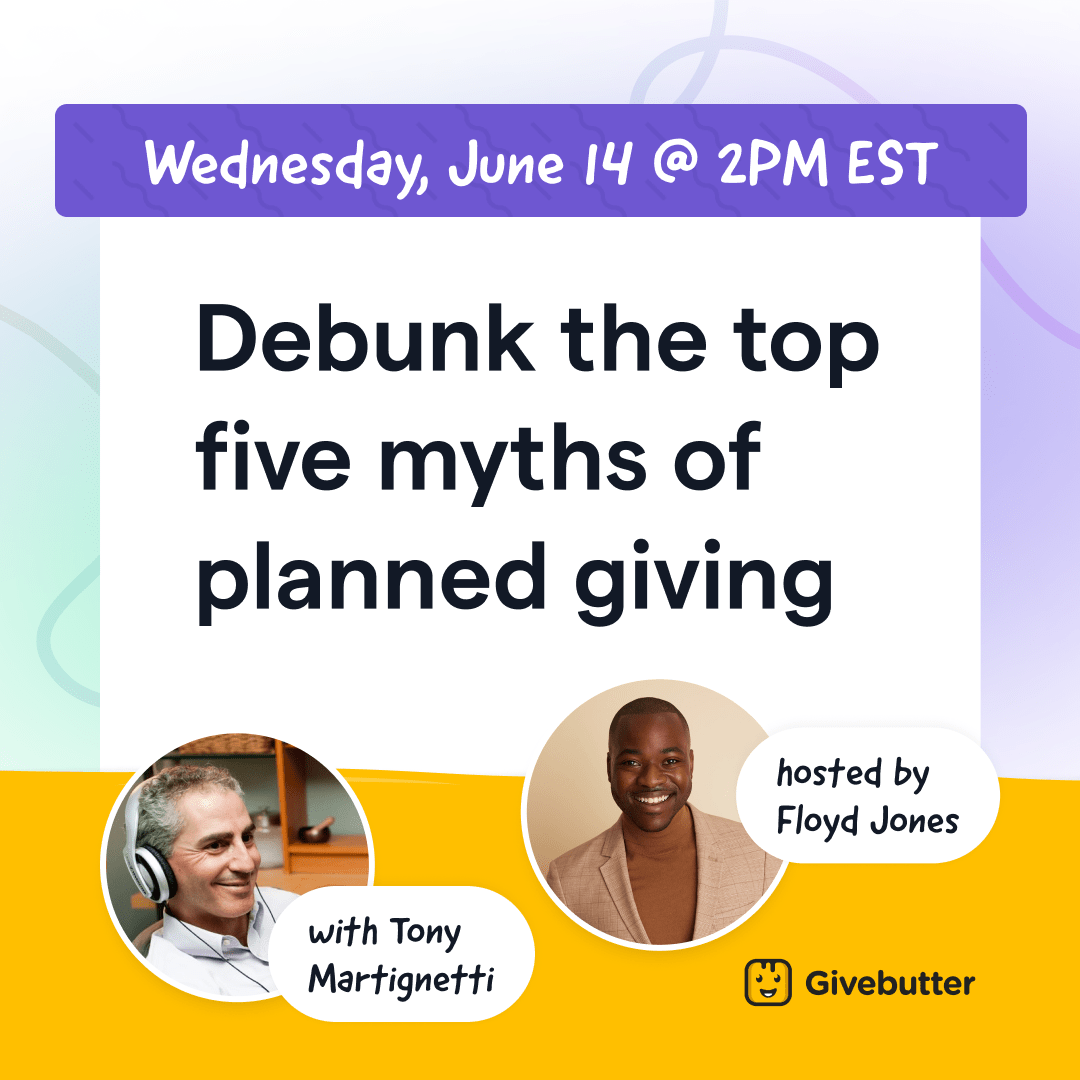Table of contents
Table of contents
To accomplish your mission as a nonprofit, you need to grow your supporter base. This is key for organizations of all sizes, but especially important for those who have just decided to launch a nonprofit and need all the support they can get. One of the best ways to increase incoming donations is to transform a one-time gift into ongoing support.
According to Double the Donation, recurring donors give 42% more than one-time supporters. Investing time and resources into improving donor relations can help increase recurring donations and better equip your nonprofit to better your community.
Below, we explain the importance of building strong donor relationships and tactical steps you can take to encourage recurring donations.
The importance of donor relations
Why should you care about donor relations? Simple—loyal, recurring donors offer something that's increasingly rare (and valuable) within the nonprofit sector: stability.
According to Salesforce, recurring donors are worth 4x more than a one-time supporter. Over time, recurring monthly donations give a nonprofit predictable revenue, which allows them to cover operational costs, launch new program initiatives, and support more people within their community. Plus, it gives wiggle room to invest in tools, technology, and upfront fundraising costs, thereby enabling your team to do their jobs.
To get more recurring donations, you need to invest in a donor relations strategy. Donor retention can be broken down into four pillars, including:
- Gift management 🎁: Gift management refers to the process of informing supporters on how their contributions are spent. Whether through an automated receipt or an annual report, you need to get crystal clear with the public about your budget and the results you gain.
- Acknowledgement 📣: Donor acknowledgement includes the process of expressing your gratitude to each of your supporters. Whether it's a thank-you note for a major gift or a social media highlight for new donors, expressing appreciation can keep donors coming back.
- Recognition 📥: Recognition involves publicizing your supporters' involvement in your organization. Donor recognition could involve writing donors' names on a wall or plaque, creating a giving society, or organizing a donor appreciation event.
- Engagement 💘: Donor engagement is the process of building strong relationships with a supporter so they come back year after year. To do so, you may want to build personal donor profiles and tailor each experience to the individual (more on this below).
3 things you can do this month to improve donor relations
Even small, grassroots nonprofit organizations can invest in their donor relations strategy. To improve your overall donor experience, try implementing these steps over the course of the next 30 days:
1. Write a welcome series ✍

Here’s a fun fact that few nonprofit marketers realize: Two-thirds of individuals do zero research before donating to a cause.
In other words, many first-time donors may know very little about your organization when they make their contribution. This gives you a short window of opportunity to educate them on your mission, programs, and impact.
After a supporter makes their first donation, move them into an automated email sequence where they can learn more about your organization. The first email should arrive in their inbox the day they donate, with the second and third emails arriving several days apart. A sample welcome series may look something like this:
- First email: A custom message thanking the individual for their contribution, and offering a quick overview (one paragraph) on the mission of your organization.
- Second email: A breakdown of how individual donations are spent, and the results these donations helped achieve in past years.
- Third email: A quick overview on various ways to get involved, including upcoming fundraising events, volunteer opportunities, and programs for your nonprofit.
2. Build donor profiles 💁

Improving donor relations is no more than gaining a better understanding of your donors. To do that, you need a CRM system like Givebutter’s donor management suite, which includes the world’s first free nonprofit CRM.
Building donor profiles within a CRM (customer relationship management) system allows you to automatically track all correspondence with each donor, including texts, phone calls, and emails. Plus, it allows you to store contact information, past event attendance, or even the date of their first gift. Once you have your CRM set up, try doing the following:
- Create personas: Look at your entire donor database from a 500-foot level overview—are there any patterns you can identify? If so, you can better tailor all upcoming marketing material (email blasts, webinars, or social posts) to your target audience.
- Segment your audience: Donor segmentation allows you to personalize your message to individual groups. For example, when promoting your upcoming charity golf tournament, you can send one email to potential corporate sponsors and another to potential players (individual donors).
- Personalize your outreach: By using a CRM system that integrates with your fundraising and email automation software (like Givebutter), you can personalize your email marketing. Research shows that personalized emails are 26% more likely to be opened, and can increase revenue (incoming donations) by as much as 760%.
3. Highlight three new donors 🏆
Highlighting new donors can deepen their loyalty and connection with your organization. Soon enough, their one-time contribution transforms into a monthly recurring gift.
Over the course of the next 30 days, set an organizational goal to highlight three new donors.
If you’re a large nonprofit, you may want to bump this goal up to five to 10. Challenge your team to get creative on how you recognize these individuals, then record which tactics were most effective in converting them into recurring donors.
Expressing gratitude, recognizing new donors, and being diligent in your follow-up forms the foundation of donor relations. Here are a few ideas to get you started:
- Create a welcome package: Mail a welcome package to new major donors, featuring the story of your organization, a handwritten thank you card, and a small gift. A gift could be a T-shirt, bookmark, or coffee mug.
- Piece together a video montage: Take photos of your new beneficiaries at fundraising and/or volunteer events. At your annual donor appreciation event, play a video montage capturing photos of your new supporters.
- Host an open house: How many times do your new constituents get to see your organization in action? Host an open house for all new supporters at your nonprofit's office—throw a happy hour, introduce your internal team, and offer a tour of your building.
Improve your donor relations strategy with Givebutter
A proper donor relations strategy can help boost recurring donations. Through acknowledgement, recognition, stewardship, and engagement, you build a loyal supporter base.
You don't need a large budget in order to launch a donor relations strategy (with Givebutter, you don’t need any budget at all!).
You can take small, actionable steps today to build lasting donor partnerships.
By educating your donor base, creating a donor database, and recognizing new donors, you boost your recurring donations.
To improve donor relations, you need the right tools. Givebutter is the #1 free all-in-one platform with robust fundraising tools, built-in CRM, and email automation to increase your recurring gifts. Plus, Givebutter offers a robust network of nonprofit and fundraising experts to help you hit your campaign goal.

If you're wondering how to get started launching a donor relations strategy, reach out to the Donor Relations Guru. Founder Lynne Wester and her team help nonprofits with their CRM, supporter engagement, storytelling, donor data and analysis, and storytelling to build loyal donor partnerships.
Ready to see how Donor Relations Guru and Givebutter can help you reach your campaign goals? Reach out to Lynne's team to help build strong donor relationships, and launch your free Givebutter account to get started.





.png)




%20(1).png)






.png)






.svg)
.svg)
